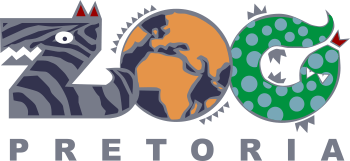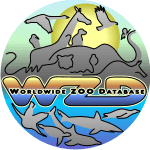| |
|
|
| |
The first 100 years - a brief history of National
Zoo |
|
| |
 Nestled in the centre of Pretoria lies a veritable oasis of wildlife
that beats with an international heart in an African home - the National
Zoological Gardens of South Africa.
Nestled in the centre of Pretoria lies a veritable oasis of wildlife
that beats with an international heart in an African home - the National
Zoological Gardens of South Africa.
The establishment known today as the National Zoological
Gardens of South Africa was founded in 1899 by the then-director of the
Staatsmuseum, Dr Jan Boudewyn Gunning. Dr Gunning kept a collection of
birds and a few mammals in the backyard of the Museum that were destined
to be stuffed and put on display in the Museum. However, Dr Gunning had
other plans for the animals.
Being aware that the Republican Government had bought the
farm "Rus in Urbe" in 1895 with the idea of establishing a zoological
gardens there, Dr Gunning waited for the chance to transfer his live
Museum animals to this site. His opportunity arose in 1899 with the
outbreak of the Anglo-Boer War when the young men who occupied the
farmhouse on “Rus in Urbe” moved out to join the war.
Dr Gunning encouraged residents living in the area adjacent
to the Museum to complain about the noise and odour caused by the
animals living in its backyard. Very soon he obtained permission to
transfer a group of animals to “Rus in Urbe” on 21 October 1899 - this
was the humble beginnings of what we know as the National Zoo. Dr
Gunning served as the Director of the Zoo from 1899 to 1914.
The Zoo received national status in 1916 and became known as
the National Zoological Gardens of South Africa under the leadership of
then-director, Dr Alwin Karl Haagner. Although the zoo could not afford
to purchase many animals, Dr Haagner allowed the facility to be used as
a stop-over point for animals from Africa on their way to Europe and
America. In this way, the residents of Pretoria had an opportunity to
view many exotic animals.
The third Director of the National Zoological Gardens of
South Africa was Dr Rudolph Bigalke who served in this position from
1927 to 1962. A great many expansion projects happened during Dr
Bigalke’s directorship; the most noteworthy being the creation of the
mountain area exhibits to the north of the zoo. These habitats are now
the homes of Bengal tigers, lions, urials and Nubian ibex. These
enclosures also marked the beginning of the end of small cages for zoo
animals.

Zoo modernization continued in all earnest under the
leadership of the fourth Director of the zoo, Dr Frank Brand. His
philosophy was that animals should not be housed singly in enclosures.
To him, a zoo represented an animal’s natural habitat and set out to
convert the National Zoo accordingly. During his directorship, which
lasted until 1984, Dr Brand went about enlarging enclosures and making
habitats more animal-friendly. He was also responsible for the abolition
of using animals as entertainment for the public. Training and playing
with wild animals became taboo.
The Lichtenburg Biodiversity Conservation Centre in the North
West was born out of a need to breed endangered species and was formed
in 1974. A total of 6000 hectares of highveld was made available to the
National Zoological Gardens of South Africa.
The biodiversity conservation centre houses and breeds many
endangered species including white rhino, Pere David’s deer, Cape
mountain zebra, scimitar-horned oryx and Arabian oryx.
Seven years later, in 1981, the National Zoo established the
1000-hectare Biodiversity Conservation Centre in Mokopane in the Limpopo
Province. The typical bushveld country is ideal for the breeding of
black rhino, roan antelope, tsessebe and lemurs.
The fifth Director of the National Zoological Gardens of
South Africa was Willie Labuschagne, who served in this position from
1985 until 2006. Mr Labuschagne is a leader in the zoological gardens'
fraternity, both nationally and internationally. In 1989, the Pan
African Association of Zoological Gardens, Aquaria and Botanic Gardens (PAAZAB),
now known as the African Zoo Association, was established due to his
visionary leadership. He served three terms as Chairman of PAAZAB.
His highest accolade while at the NZG was his election to the
office of President of the World Association of Zoos and Aquariums (WAZA),
which he held from 1999 to 2001. During his tenure as WAZA President,
the organisation was transformed into a dynamic body representing zoos
throughout the world.
Under Mr Labuschagne's leadership, the NZG developed into one
of the top ten zoos in the world and is regularly voted a tourist
hotspot in Tshwane.
In 2001, the National Zoological Gardens of South Africa
established the 203-hectare Emerald Animal World housed at the Emerald
Safari Resort and Casino in Vanderbilpark. The facility comprises a
189-hectare game park and a 14-hectare zoo.
The Emerald Animal World facility houses more than 600
animals representing 128 species of mammals, birds, amphibians and
reptiles. Animals that can be viewed there include white rhino, hippos,
lions, cheetah, various antelope and reptile species and even bats! All
the animals were provided by the National Zoo’s two other satellite
facilities in Lichtenburg and Mokopane.
Source: official web of
Pretoria Zoo (2010)
|
|
|
|
|

